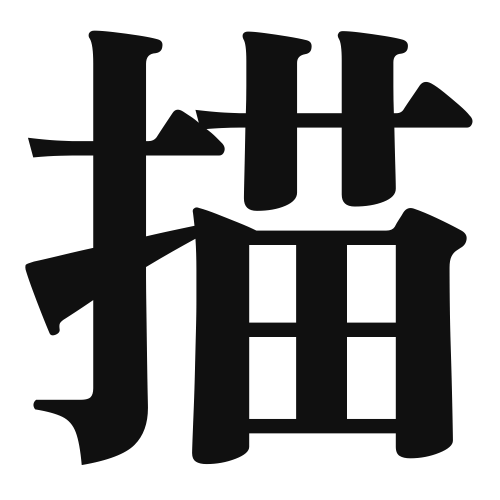1. Overview of Meaning
The kanji “描” (byou) means “to draw” or “to depict.” It is often used in the context of creating images or illustrations, whether on paper or in other forms of art.
2. Formation and Radical
Formation of the Kanji: The kanji “描” is a compound character that combines elements to convey its meaning. It consists of the radical for “brush” (毛) and the character “to speak” (彫), which together suggest the act of drawing or depicting something.
Radical: The radical of “描” is 毛 (ke), which relates to hair or fur, but in this context, it symbolizes the brush used for drawing.
3. Examples of Usage
Common Words and Phrases: Some frequently used words that include “描” are:
- 描写 (byousha) – description, depiction
- 描く (kaku) – to draw, to paint
Example Sentences in Daily Conversation:
- 彼は美しい風景を描くのが得意です。
(Kare wa utsukushii fuukei o kaku no ga tokui desu.)
– He is good at drawing beautiful landscapes. - この絵は彼女が描いたものです。
(Kono e wa kanojo ga kaita mono desu.)
– This painting is something she drew.
4. Synonyms and Antonyms
Similar Kanji: A similar kanji is “画” (ga), which also means “to draw” or “picture,” but it often refers to a more formal or artistic representation, such as in paintings or illustrations.
Opposite Kanji: An antonym could be “消” (shou), which means “to erase” or “to disappear,” representing the opposite action of drawing or depicting.
5. Cultural and Historical Background
Relation to Japanese Culture: The act of drawing and painting has a significant place in Japanese culture, from traditional ink paintings to modern manga and anime. The kanji “描” reflects this artistic heritage.
Proverbs and Idioms: One common idiom is “描いた通り” (kaita toori), which means “as drawn” or “as depicted,” often used to express that something has turned out as expected or planned.
